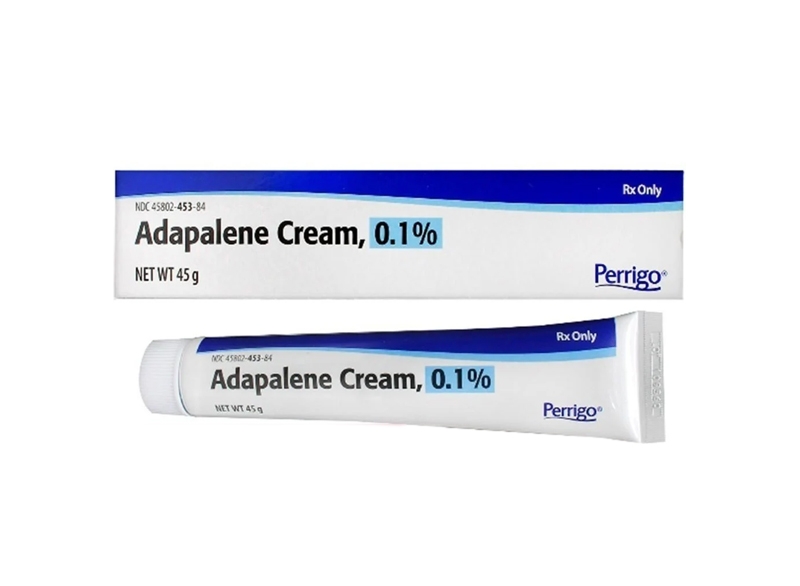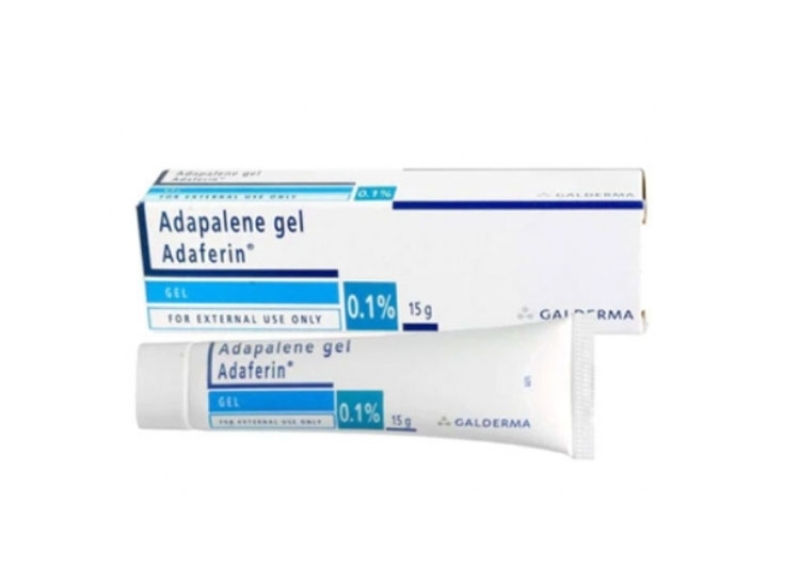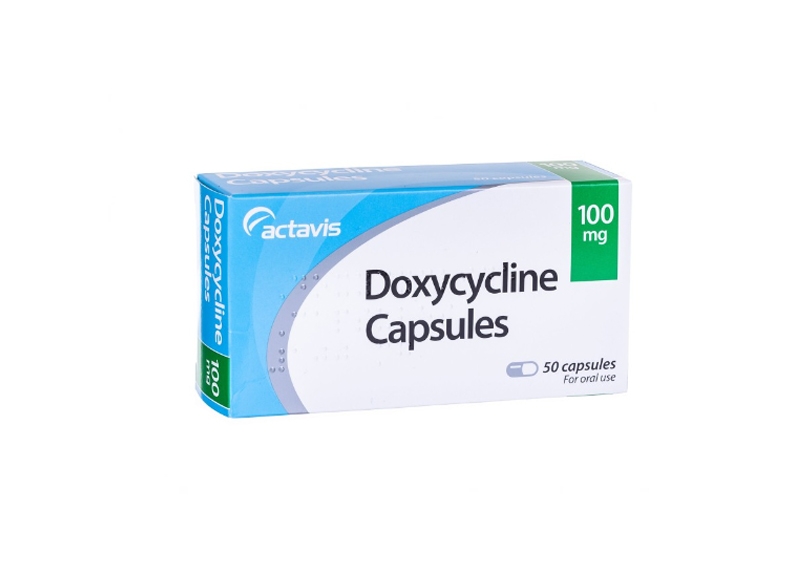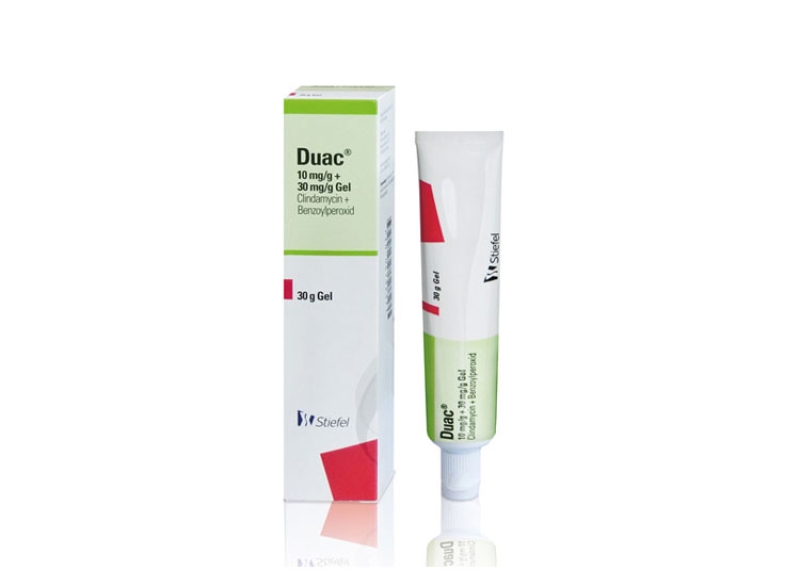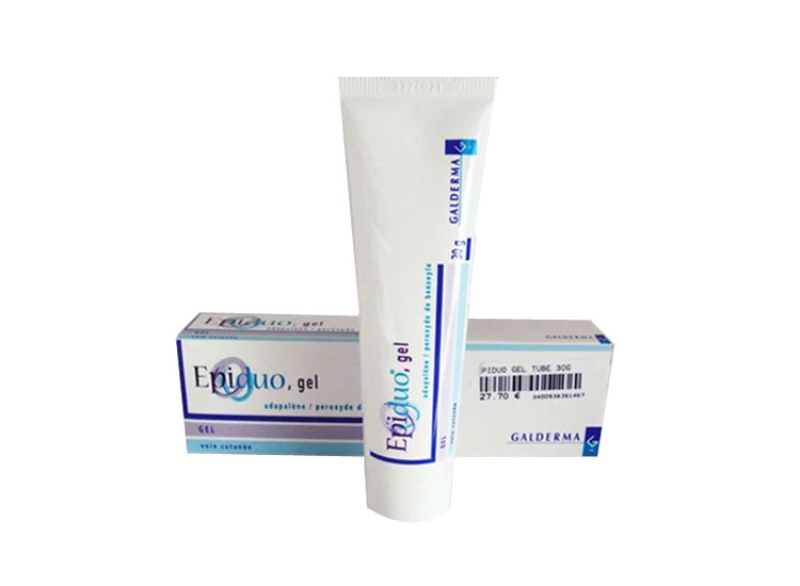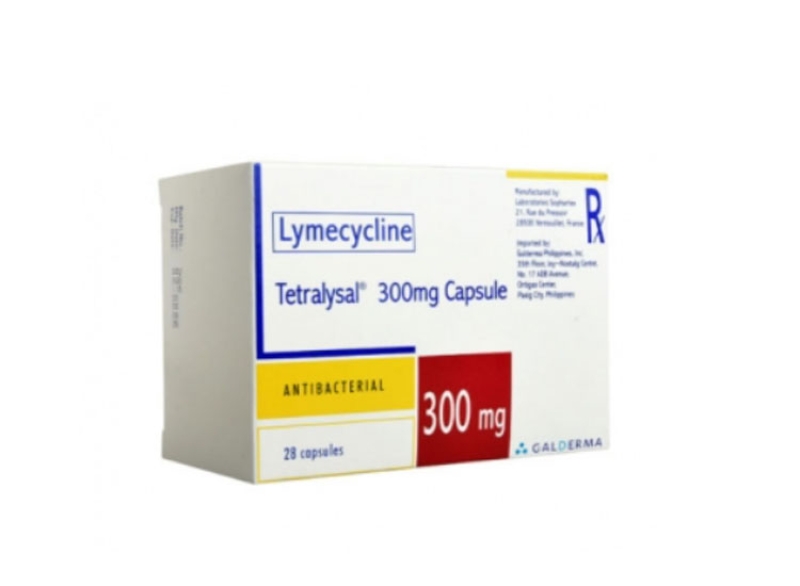How to Order ? Simple.
-

1.
Select Treatment
Choose from our treatment options or speak to the in-store pharmacist for advice
-

2.
Complete Medical Questionnaire
Complete our free online medical consultation to be reviewed by our Clinical Team
-

3.
Collect Medication from Local Pharmacy
We will notify you when your medication is ready for collection
Advice for Acne
Acne is a common inflammatory skin condition that’s caused when the hair follicles are blocked with dead skin cells and sebum. Sebum is a type of oil that is made by a gland in our follicles and helps to moisturise and protect our skin. Bacteria can also collect in the follicle, causing pus to form.
In the most part acne will consist of a combination of blackheads, whiteheads and small red bumps called papules, or white tipped spots called pustules. Some people also experience large hard lumps called nodules, as well as cysts which have the appearance of boils and are the most likely to cause acne scarring. Acne often affects the face but can also affect other areas of the body like the back, chest, neck, shoulders, and upper arms.
Acne is quite common, affecting around 95% of people aged between 11 and 30 years old. How bad the acne can get can be very different from person to person. Most people will find that their acne clears up in early adulthood, but around 3% of people will continue to have acne when they are over 35 years old.
Many people with acne will have periods where their acne is under control, only for it to flare up occasionally. During flare-ups, the patient can have more spots and the spots they have can become more severe.
At Pharmacinta, we have a range of treatments available to help manage your conditions including topical treatment and antibiotics.
Acne can appear in different forms, and some of the most common types are listed here.
Blackheads
Blackheads are caused when a follicle becomes clogged by dead skin cells and sebum, and the follicle remains open. With the follicle open, the contents are exposed to air, allowing them to react with oxygen in the air. This causes the contents to turn black in a process known as oxidation.
Whiteheads
Whiteheads are often mistaken for pustules, but there is actually no pus or swelling. Whiteheads develop when there are blocked follicles beneath the skin's surface and the opening of the hair follicle is forced to close around the blockage.
Papules
Papules are small bumps on the skin that usually turn red and have no pus visible beneath the skin. With a papule, the contents of the plugged follicle have put enough pressure on the walls of the follicle to cause them to break. The contents then spill out into the surrounding area, causing irritation and tenderness to the surrounding tissues.
Pustules
A papule will often turn into a pustule within a few days. The main difference between a pustule and a papule is that a pustule will contain pus that's visible on the surface. Much like a papule, a pustule will typically have a red or pink base, although the centre of the bump will be white or yellow in colour.
Nodules
Nodules occur when clogged pores grow larger and become more irritated. One of the key differences between nodules and the acne types already mentioned is that nodules are deeper under the skin. They can be hard and painful.
Cysts
Cysts are often the most severe form of spot caused by acne. They can sometimes be confused for boils, as they look very similar. Cysts are the most likely to cause permanent scarring. Find out more about acne scars and treatments.
Acne is caused by the hair follicles becoming blocked. The glands attached to the hair follicles, called the sebaceous glands, produce an oil called sebum to keep the skin and hair hydrated. If you have acne the glands begin to produce too much sebum, causing the follicles to get blocked.
Sebum will sometimes not make it to the surface of the skin, becoming clogged in the follicle instead, potentially causing the follicle to become inflamed and swollen. Dead skin can also gather in the follicle, along with bacteria, and where bacteria collect you are also likely to find pus. The result is the spots and pimples that acne causes.
There are a variety of situations that can trigger the condition and can make acne worse. Wearing lots of makeup, heavy sweating or a humid environment can block pores. Touching your skin with your hands, picking or squeezing spots can spread germs across your face as well as increase inflammation.
Other causes of acne is due to some of the following reasons:
Testosterone
It is thought that acne in teenagers is caused by increasing levels of testosterone during puberty. Sebaceous glands seem to produce more sebum when there are increased levels of testosterone in the body, so this is likely to cause this blockage of the pores. Hormonal changes
Women are more susceptible to adult acne than men and this is likely to be caused by the changes in hormone levels due to periods, pregnancy or conditions such as polycystic ovary syndrome.
Genetics
It has been found that if your parents have acne, you are likely to have acne as well. Studies have shown that acne in your teenage years is more likely if both your parents had acne. The same goes for adult acne - if one of your parents have or had this, you also have a higher chance of developing adult acne.
Stress
While stress doesn't necessarily cause acne, if you are acne prone, stress may worsen the condition.
Diet
It is often thought that greasy foods and chocolate can trigger acne, but this is not the case. Some studies have shown that eating foods high in carbohydrates is a potential trigger for acne. Foods that are high in carbohydrates include pasta, bread, beans, soft drinks, and pastries. However, while this is not proven, a healthy diet will always benefit your skin.
Medication
Some medicines can also trigger acne. Such medicines include, but are not limited to, some contraceptives, oral corticosteroids, and less commonly some B vitamins.
There are a wide range of options available for treating the condition, from topical creams and lotions to specific antibiotics for acne and combined treatments. It is also worth trying to avoid any triggers that exacerbate your acne, giving your skin the time to breathe and respond to acne treatment.
At Pharmacinta, we can prescribe the use of a topical treatment such as Adapalen, Epiduo or Duac. We are also able to provide Lymecycline oral antibiotc for those who have moderate to severe acne. Lymecycline is an antibacterial medication that works by killing the bacteria responsible for acne. Epiduo contains benzoyl peroxide and adapalene. Benzoyl peroxide helps to kill bacteria causing acne, while adapalene is a retinoid. This means it exfoliates the skin to remove dead skin cells, dirt and oil, and also helps to accelerate the turnover of skin cells. Differin also contains the retinoid adapalene. It acts on the skin processes that cause acne, with anti-inflammatory properties that help with discomfort and irritation.
Which acne treatment is right for you will depend on various factors, including the type of acne you have. For mild acne one topical cream is usually sufficient but in moderate to severe cases a combination of topical cream and daily antibiotic usually is preferred. While there are a range of acne prescription treatments available, it is the case that different combinations may work for different people.
Hormonal Treatments
Hormonal treatment may work well for women with acne, especially if it flares up around the time of their period. Some combined contraceptive pills will reduce the levels of certain hormones known as androgens in the body. A reduction in androgens will, in turn, help to reduce how much sebum is produced, helping to control acne.
It's important that combined contraceptive pills are used because they need to contain both oestrogen and progestogen to be effective. The mini pill, which contains only progestogen, may actually make acne worse.
Retinoid Treatment
Retinoids are a group of drugs that are made from vitamin A. Vitamin A is important for healthy skin because it encourages the production of elastin and collagen, and retinoids encourage the production of new skin cells. New skin cell growth will cause dead skin cells to be removed (exfoliation), helping to clear pores of dead skin cells and excess oil. Retinoids also help to reduce inflammation, reducing pain and irritation and helping to improve the appearance of the skin.
Over the Counter Treatments
One of the most common ingredients in acne washes and creams is benzoyl peroxide (BP), which is an antibacterial agent. Such treatments will usually be in the form of face washes or creams that are applied directly to the affected area and help to keep follicles clean of oil and debris, as well as helping to kill bacteria.
Healthy Diet
Greasy and spicy food is thought to promote breakouts. Food allergies, however mild they may be, are also potential triggers. Dairy products, nuts, chocolate and soda are some of the common allergenic foods. So are alcohol and certain additives in fast foods. Eating plenty of fruits and vegetables will ensure healthy skin.
Hydration
Drinking plenty of fluids is thought to reduce acne risk considerably. Besides flushing out toxins from the body, water can keep the skin moisturised from the inside.
Frequently Asked Questions
Acne is not down to poor hygiene, but regular cleaning can still help to keep acne under control. Wash the affected area regularly using a mild soap to avoid irritating the skin. Also, be mindful of which cosmetics or other products you are using on your face. You should also try and identify triggers that might be causing flare-ups.
<ul> <li>Squeezing and picking at the spots</li> <li>Not washing immediately after exercise</li> <li>Over washing the skin and stripping it of protective natural oils</li> <li>Chemicals, grease and damp in your working environment</li> <li>Having menstrual periods</li> <li>Reactions to medicines</li> <li>Wearing too much make-up</li> </ul>
<ul> <li>By washing twice daily with a mild cleanser without using an exfoliator.</li> <li>Keep hair clean and off your face and do not pick at the pimples.</li> <li>Avoid extreme cold and heat.</li> <li>Do not use lots of make-up especially oily foundations.</li> <li>Eat well and drink plenty of water.</li> </ul>
Popping, picking or squeezing spots can cause scarring.
The scars sometimes caused by acne can be removed by dermabrasion or laser treatment carried out by a dermatologist or a plastic surgeon. For less serious scars and marks Bio-Oil has been shown to be highly effective in improving the appearance of scars and marks.
Excessive washing will strip natural oils from your skin. This causes your skin to dry out as the natural oils help to protect your skin from moisture loss. As a result your skin will overcompensate and produce more oil, eventually leading to clogged pores and acne.
Acne is caused blocked pores becoming aggravated by bacteria found naturally on the surface of the skin. In warmer climates where sunlight is stronger, the light can kill off the bacteria and improve your complexion. UV light was used to treat acne but this practice has reduced due the worries over skin cancer. It would therefore not be advisable to use sunbeds as a method to treat acne.
It can help by improving your complexion because nicotine promotes the production of white and blackheads.
You should not squeeze spots as this can cause scarring and will not guarantee that your acne will clear up any faster.
Certain medications, like steroids, can cause acne as a side effect and we also know that the body produces cortisol, a natural steroid during periods of stress. This can lead to breakouts of acne.
Acne can run in families. If your parents had acne, it increases the chance that you will.
It can take approximately 4 months for acne treatments to be fully effective so you may not see immediate improvement in your condition. Topical treatment is preventative in that it helps to stop lesions developing rather than getting rid of the spots you already have.
There are some links between the hormonal changes caused by contraceptive pills and acne vulgaris.
It is not advisable to pick at your skin, as it can lead to scarring. However, you may wish to take action to keep them under control. Blackhead removal treatments vary from simple clay masks to microdermabrasion to remove dead skin cells and improve the surface of the skin.
You cannot transmit acne from one person to another.
Acne is most common in teenagers around the age of puberty, due to hormonal changes. However it can also be caused by the different stages of the menstrual cycle, polycystic ovary syndrome, pregnancy and for some women acne can continue after having a baby.
You can use other topical acne medications alongside Adapalene, however they should be used in the morning and your Adapalene at night. You should avoid any products that contain tretinoin, isotretinoin or tazarotene.
Before purchase, Duac will be stored in the refrigerator. However, once you receive the item it can be stored out of the fridge, up to 25°C. Duac must be discarded after 2 months.
Results may not be seen before 12 weeks. However, in many cases, results can be observed following continued use during a 12 week period.
No, there is no evidence to suggest that applying more gel (i.e. not thinly) will improve acne treatment and can lead to resistance.
Duac Gel is a prescription-only medicine that cannot be bought over the counter.
This can vary but most people will see results within 4-5 weeks. However, it may take up to 8 weeks for some people.
If after 8 weeks, there is no improvement in your acne, you should stop treatment. After three months of use, you should review the treatment with your GP.
Several months of treatment may be needed to see the best results.
It can be taken for up to 3 months when used to treat acne.
It depends on how your acne has responded to Tetralysal. If your acne has not improved another course of treatment may be prescribed or different treatments can be prescribed.
Tetralysal should be used for at least 8 weeks. Acne can take time to respond to antibiotics. If you stop taking it too soon, your acne could get worse or come back.
Lymecycline is not available to buy over the counter because it is a prescription-only medicine.
Yes, you can drink alcohol whilst taking Lymecycline. Remember that drinking alcohol may make some side effects of lymecycline worse.
Some medications may affect how well lymecycline works and some may not be safe to take with lymecycline. It is important to tell your doctor if you are taking other medicines.
Most people will see results within 4-5 weeks. It may take up to 12 weeks for some people.
You should use Epiduo for as long as your doctor has recommended. If there is no improvement after 4-8 weeks, speak to your doctor to discuss the next best step.
Epiduo gel should not be used if you are pregnant or breastfeeding. It is only safe to be used by women who are sexually active if they are using an effective contraception.
You should avoid any other topical acne medications while you are using Epiduo gel, particularly those that contain Benzoyl Peroxide and/or retinoids.
Epiduo Gel is a prescription-only medicine and is not available to buy over the counter.
